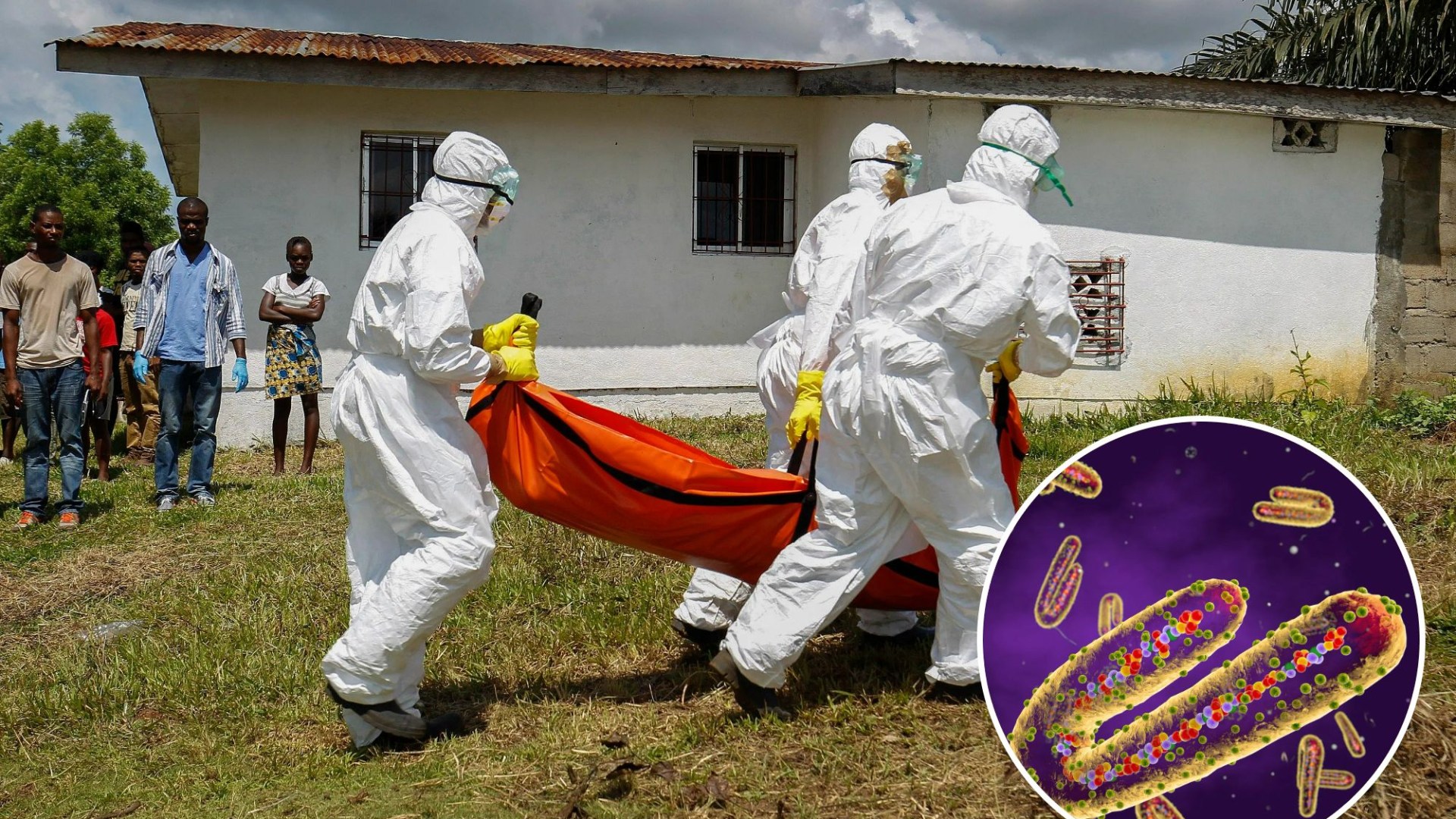A MAJOR outbreak of the ‘eye-bleeding disease’ Marburg may have reached Europe and could spread globally, an expert has warned.
At least 27 cases and nine deaths of the incurable Marburg virus have been reported in Rwanda, Africa, by local authorities since Friday – one of the largest outbreaks of the Ebola-like virus on record.
4

4
Most of the recorded Marburg cases so far have involved healthcare staff treating infected patients in and around Kigali, the country’s capital.
Kigali is home to 1.2million people and has a well-connected airport, raising fears of international spread.
In a statement issued on Monday, the World Health Organisation (WHO) categorised the risk of spread to neighbouring countries as high.
It also suggested there is a risk of spread beyond East Africa.
Marburg has already been flagged by the WHO as a ‘priority pathogen’ with pandemic potential.
Paul Hunter, a professor of medicine at the University of East Anglia, told The Sun this outbreak of Marburg could “crop up in any country globally”.
“The incubation period is between five and 15 days, plenty long enough for someone to get on a plane and fly anywhere in the world,” he explained.
The incubation period of a virus is the time between exposure to the virus and the onset of symptoms.
“Airport screening wouldn’t eliminate that risk due to the long incubation period,” Prof Paul said, as people could be travelling without showing any symptoms.
Previous outbreaks have seen around half of those infected die, though in places where health care is poor, that has risen to nearly 90 per cent.
Around 300 people who had contact with confirmed cases in Rwanda have been identified, with some placed in isolation facilities.
But one contact of a suspected case has already travelled to another country, the WHO said.
The statement didn’t directly mention the country, but a slide shared on X that mapped out the transmission chains pointed to the wife of someone with the disease who had travelled to Belgium.
The Sun has reached out to Belgian health authorities for confirmation.
The WHO’s statement assured that “appropriate response measures have been implemented” by the country in question.
Meanwhile, the organisation is deploying experts and outbreak response tools to Rwanda to help curb the virus.

4

4
Should we be worried?
By Professor Paul Hunter, from the Univeristy of East Anglia
Even if the Marburg was brought over to Europe or the UK, the chance of it spreading like wildfire is small.
The disease spreads easily in hospitals in Africa because they don’t have the infection prevention resources we have in the West.
Once a diagnosis has been made in the UK the patient would be transferred to one of the High Level Isolation Units either at the Royal Free, London or Newcastle.
Once there the staff are very well trained in how to protect themselves.
The risk to healthcare workers would likely be early in the illness when, fortunately, patients are not as infectious.
Hospital patient visits have been banned for two weeks and funeral services have been restricted, in a bid to limit physical contact with those who may have or have died from the bug.
The US Embassy in Rwanda’s capital of Kigali has urged its staff to work remotely and avoid visiting offices.
Marburg virus jumps to humans from fruit bats and spreads through direct contact with bodily fluids like blood, saliva, and mucus.
Symptoms include high fever, intense headaches, muscle pain, diarrhoea, and vomiting.
In severe cases, death can result from massive blood loss from different parts of the body, including the eyes.
There are no approved treatments yet, but one vaccine is being trialled, which Prof Paul is “quite confident” will be effective.
Rwanda has urged the public to stay alert, practice good hygiene, and report any suspected cases.
Though Marburg causes symptoms similar to its cousin, Ebola, outbreaks have typically involved fewer than ten cases.
Only two outbreaks have surpassed 100 cases.
The largest one was in Uije, Angola, between 2004 and 2005, with 252 confirmed cases and 227 fatalities.
There was also a Marburg outbreak reported in Equatorial Guinea earlier in 2024, which was declared over in July.
What is Marburg virus?

Marburg is a filovirus like its more famous cousin, Ebola.
These are part of a broader group of viruses that can cause viral haemorrhagic fever, a syndrome of fever and bleeding.
Up to 90 per cent of those infected die.
The first outbreaks occurred in 1967 in lab workers in Germany and Yugoslavia who were working with African green monkeys imported from Uganda.
The virus was identified in a lab in Marburg, Germany.
Since then, outbreaks have occurred in a handful of countries in Africa, less frequently than Ebola.
Marburg’s natural host is a fruit bat, but it can also infect primates, pigs and other animals.
Human outbreaks start after a person has contact with an infected animal.
It’s spread between people mainly through direct contact, especially with bodily fluids, and it causes an illness like Ebola, with fever, headache and malaise, followed by vomiting, diarrhoea, and aches and pains.
The bleeding follows about five days later, and it can be fatal in up to 90 per cent of people infected.




